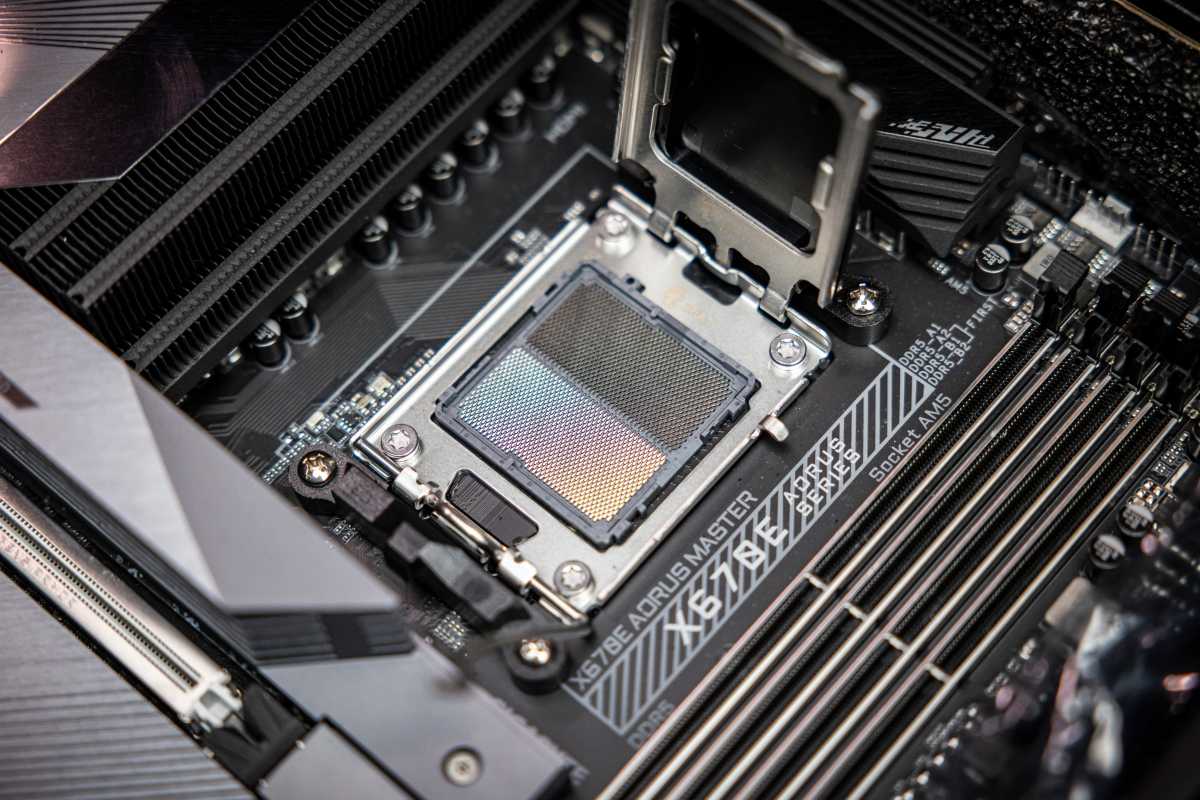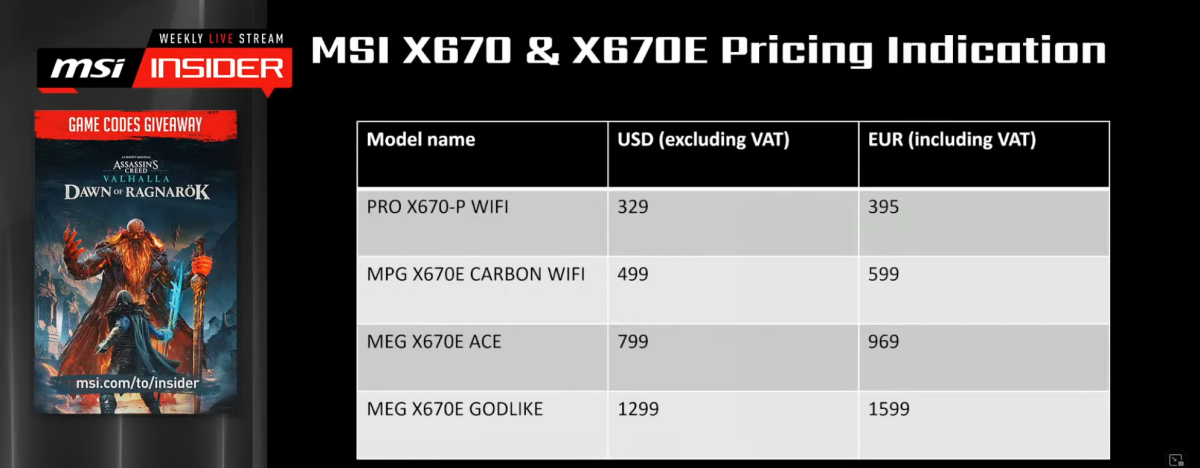Ryzen 7000 is more than just AMD’s latest batch of processors. The Ryzen 7950X, 7900X, 7700X, and 7600X are AMD’s first Zen 4 chips, first produced on 5nm, first to sport integrated graphics, and first to usher in the new AM5 socket with debut PCIe 5 and DDR5 support.
As you’ll see in our Ryzen 9 7950X review, AMD has plenty to be proud of. Dig through the many benchmarks, and you’ll see the flagship CPU trounce the competition and post big improvements over last-gen Ryzen 5000. The chips down the list pull out some flashy numbers, too.
It adds up to an outstanding accomplishment for Team Red—though one set against a backdrop of complicated nuances. Here are the 6 essential things you need to know about AMD’s outstanding Ryzen 7000 CPUs.
The Ryzen 9 7950X is a multithreaded monster

Gordon Mah Ung / PCWorld
Got heavy rendering and/or encoding workloads? The Ryzen 9 7950X is the chip for you. It stomps Intel’s flagship Core i9-12900K in raw performance. In our multithreaded benchmarks, it won again and again, with its smallest victory a hefty 37 percent, and its largest a whopping 60 percent. The 7950X shows up its predecessor, too, with its lead over the 5950X as big as 48 percent.
This chip’s weak spot (if you can call it that) is instead in single-core and lightly threaded tasks, and some specific areas like machine learning and encryption. The battle with Intel is fairly even here, with Team Blue’s flagship chip sometimes coming out on top. Add in software optimization, like Adobe Premiere Pro’s use of QuickSync to boost video editing tasks, and the 12900K can outperform the 7950X in certain workloads. We’ll have to see if Ryzen 7000’s integrated graphics result in similar support for Team Red and a more even playing field in the future.
But that doesn’t mean Ryzen 7000 loses to 12th-gen Alder Lake outside of multithreaded tasks. Not at all. In fact, the least-powerful chip at launch, the Ryzen 5 7600X, can beat the 12900K in a number of games. What ultimately matters are the software and games you use most.
More power, more power draw

Gordon Mah Ung / PCWorld
Ryzen 7000’s stunning performance is in part a result of AMD upping electricity consumption. The new AM5 socket permits more juice to flow to the processor, and this first batch of compatible chips takes advantage of that.
So you can anticipate a higher power bill when running one of these chips. The amount depends on how hard you push them in daily use, but looking at TDP gives general idea of the increase. The Ryzen 9 5950X is rated at 105 watts; the 7950X, 170 watts. That’s the expected power draw under load—and it can go up higher still during a performance boost. Ryzen 7000’s limit is 230W through its socket, while Ryzen 5000 caps out at 142W.
Why the change? Intel. It already took this same route before AMD. By changing its approach (and design), AMD neutralizes that potential advantage.
Yet better power efficiency

Performance in this single-core benchmark barely budged even when power to the 7950X was limited by more than half. (Longer bars indicate better performance
.)
Gordon Mah Ung / PCWorld
When chips start to use more power—as Ryzen 7000 does—the performance squeezed out of each watt becomes important, especially given rising energy costs worldwide.
Fortunately, Zen 4 delivers on the company’s claims of greater power efficiency. At least, the Ryzen 9 7950X did so in multithreaded tasks. When compared to the Intel Core i9-12900K, it gets much more done in the same amount of time, or simply finishes faster. The 7950X uses less electricity while doing so, too.
It doesn’t win as clearly in single-core and lightly threaded tasks—there, the 12900K often beat the 7950X on energy efficiency in our tests.
But AMD still has another trick up its sleeve, and it’s called Eco Mode. An easy change in AMD’s Ryzen Master software utility lets you limit the power running to Ryzen 7000 chips. For example, the 7950X and 7900X can drop down to from 170W to 105W or 65W. This settings tweak reduces electricity drawn, with surprisingly minimal impact on single-core and lightly threaded performance.
This flexibility means that AMD can have its cake and eat it too—and so can you. Need every bit of juice to encode huge files fast? Or perhaps you need to set a lower power limit due to heat or power bill concerns? You’re covered.
AM5 isn’t cheap

Adam Patrick Murray / IDG
The move from the long-standing AM4 platform to AM5 is a big shift that enables blistering speed across the board—not just for the processor, but for memory, discrete GPUs, and storage, both now and in the future. AM5 works in PCIe 5, DDR5, USB4, and other cutting-edge features that can push properly equipped PCs to wild new frontiers of performance.
However, that upgrade comes with a literal cost—expect to pay a premium for an AM5 motherboard if building a PC at launch. Right now, only the more expensive X670 and X670 Extreme mobos are available, and they require quite an outlay. Take MSI for example:

MSI / YouTube
You’re seeing that right: A top-of-the-line MSI X670 Extreme motherboard is a cool $1,299 USD. The cheapest X670 option is $329.
Other components will hit hard, too. DDR5 memory isn’t cheap—Ryzen 7000’s sweet spot for RAM speed is double that of Ryzen 5000’s. Currently you’ll pay about $230 for 32GB of DDR5-6000 memory, while 32GB of DDR4-3600 is around $115. And when PCIe 5 SSDs arrive in November, they’ll undoubtedly have extravagant price tags.
To save at least some money, you have to wait until October—the more affordable B650 and B650 Extreme motherboards release then.
Running at 95C is fine
Comb through internet forums, and you’ll see post after post concerned about CPUs operating above a certain temperature. It’s true that if temps climb too high, you can see choked performance (known as thermal throttling). Some people also fear shortening their chip’s life span.
But when checking on your processor’s temperature, don’t stress if you see your Ryzen 7000 launch chip sitting at 95 degrees Celsius under heavy load. These four X-class chips can hang out there with no repercussions, according to AMD. It may be higher than you might be used to seeing, and perhaps you have other reasons you’ll want to drop that temperature, but it’s within spec.
Intel’s 13th-gen Raptor Lake looms large

Intel
Previous Ryzen generations had plenty of breathing room to luxuriate in their dominance. (The 5950X had a whole year, for example.)
Not Ryzen 7000. On the very same day it launched, Intel officially announced its 13th-generation Core processors. In addition to revealing a 24-core, 32-thread flagship chip and screaming fast clock speeds (including a 6GHz processor coming early next year), Team Blue claimed an up to 24 percent improvement in gaming performance over 12th-gen chips. And the new Core i9-13900K will offer a bump of 15 percent in single-threaded performance and 41 percent for multithreaded compared to the Core i9-12900K.
With those numbers, a 13900K will likely go evenly toe-to-toe with a 7950X in multithreaded tasks, and beat it by about 8 to 10 percent in single-threaded and lightly-threaded tasks (aka gaming).
Intel is also talking about its power efficiency now, too—even despite its power ratings climbing higher than those of Ryzen 7000. At 65 watts, the 13900K will be able to match 12900K’s 241W turbo mode performance. That’s a big statement.
How the chips fall (ahem) won’t be clear until Raptor Lake’s launch on October 20th, however. Until then, there’s plenty to love about Ryzen 7000.
Stay connected with us on social media platform for instant update click here to join our Twitter, & Facebook
We are now on Telegram. Click here to join our channel (@TechiUpdate) and stay updated with the latest Technology headlines.
For all the latest Technology News Click Here
For the latest news and updates, follow us on Google News.
